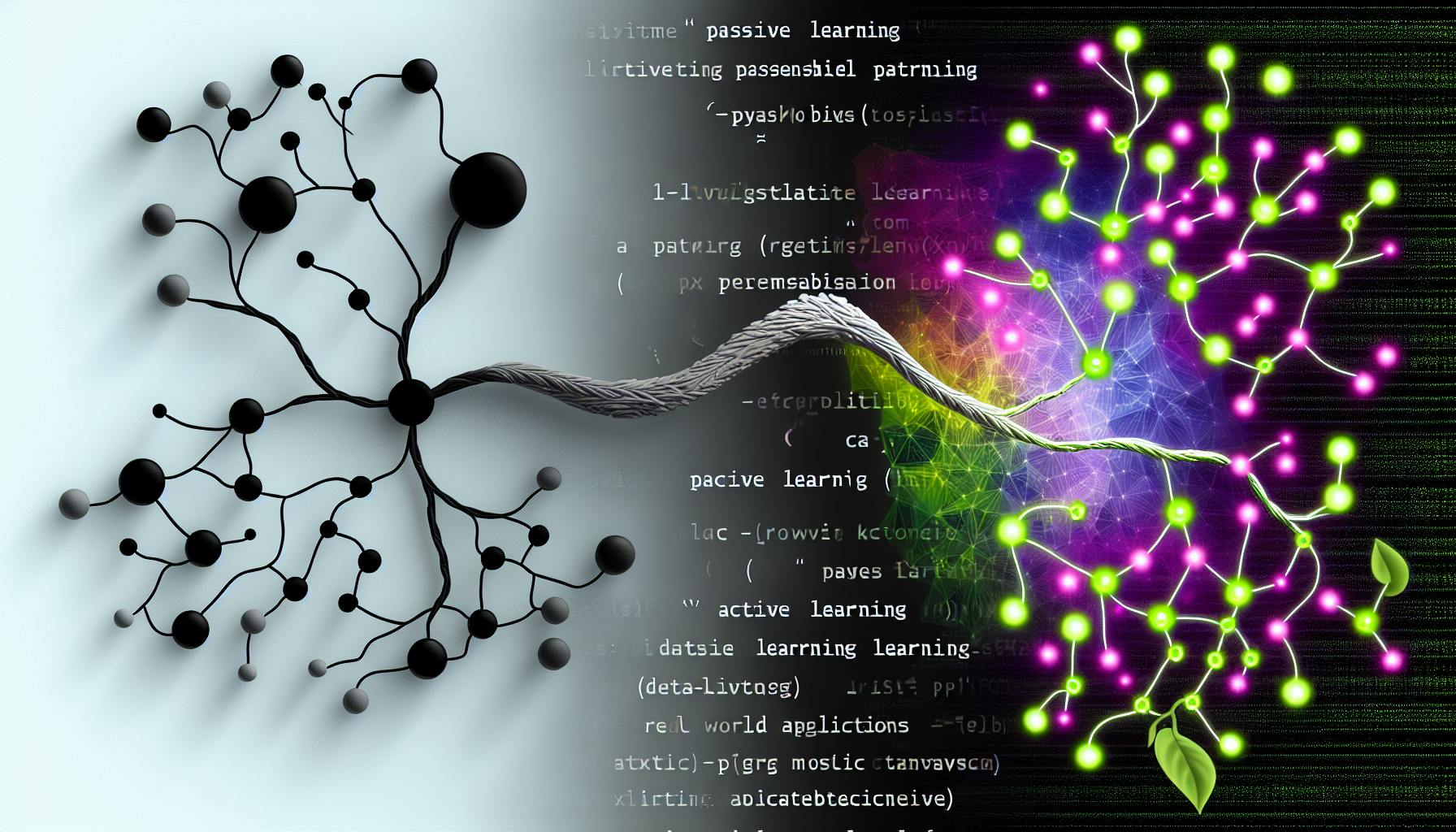Analyzing customer feedback is crucial for understanding your customers' needs and improving your business. Python provides powerful tools and libraries to extract valuable insights from customer feedback data.
Here's a concise overview of implementing a customer feedback analysis system in Python:
1. Gather and Prepare Data
- Collect feedback from various sources (surveys, reviews, social media)
- Clean and tokenize text data using Python's regex and string manipulation
2. Analyze Sentiment
- Use libraries like TextBlob or NLTK's VADER to determine sentiment polarity scores
- Identify positive, negative, or neutral sentiments in customer feedback
3. Find Common Topics
- Apply topic modeling techniques like Gensim's LDA (Latent Dirichlet Allocation)
- Uncover hidden themes and concerns in customer feedback data
4. Categorize Feedback
- Train a classification model using machine learning algorithms (e.g., Naive Bayes)
- Categorize feedback into groups for better analysis and prioritization
5. Visualize Insights
- Use Matplotlib, Seaborn, and WordCloud to create visualizations
- Identify patterns, trends, and correlations in customer feedback data
6. Integrate the System
- Use APIs to exchange data with other business systems (e.g., CRM)
- Store data and analysis results in a scalable and secure database
- Deploy the system with scalability and reliability considerations
By following these steps, you can build a robust customer feedback analysis system in Python, gain valuable insights, and drive business growth.
Requirements
To implement a customer feedback analysis system in Python, you'll need to have a solid understanding of the following concepts and tools:
Python Programming Language

You should be familiar with the basics of Python programming, including:
- Data types
- Variables
- Control structures
- Functions
- Object-oriented programming
Natural Language Processing (NLP) Concepts
Understanding NLP concepts is essential for analyzing customer feedback. You should be familiar with:
- Tokenization
- Stemming
- Lemmatization
- Part-of-speech tagging
- Sentiment analysis
- Topic modeling
- Named entity recognition
Required Libraries
The following Python libraries are commonly used for customer feedback analysis:
| Library | Description |
|---|---|
| NLTK (Natural Language Toolkit) | A popular library for NLP tasks, including text processing, tokenization, and sentiment analysis. |
| spaCy | A modern NLP library that focuses on performance and ease of use, providing high-performance, streamlined processing of text data. |
| scikit-learn | A machine learning library that provides algorithms for classification, clustering, and regression, which can be used for sentiment analysis and topic modeling. |
Having a good grasp of these concepts and tools will help you build an effective customer feedback analysis system in Python.
1. Gathering Your Data
To build a customer feedback analysis system in Python, you need to collect data from various sources, such as surveys, online reviews, and social media posts. It's essential to gather data from a diverse range of sources to get a comprehensive understanding of customer opinions and sentiments.
Preparing the Text Data
Once you've collected the data, you need to prepare the text data for analysis. This involves cleaning and organizing the text data by removing unnecessary characters, converting to lowercase, and tokenizing into words or phrases using Python's string manipulation and regex functionalities.
Here's an example of how you can prepare the text data using Python:
import re
text_data = "This is an example sentence! It has punctuation."
clean_text = re.sub(r'[^\w\s]', '', text_data).lower()
print(clean_text) # Output: "this is an example sentence it has punctuation"
Why Prepare Text Data?
Preparing text data is crucial for effective analysis. Here are some reasons why:
- Removes noise: Special characters and punctuation can interfere with analysis, so removing them helps to focus on the actual text.
- Standardizes text: Converting all text to lowercase makes it easier to analyze and compare.
- Improves accuracy: Tokenizing text into words or phrases helps to identify patterns and sentiments more accurately.
By preparing the text data, you'll be able to analyze it more effectively and extract meaningful insights from customer feedback. In the next section, we'll explore how to analyze sentiment in customer feedback using Python.
2. Analyzing Sentiment
Sentiment analysis is a crucial step in understanding customer emotions from feedback. It helps you determine the emotional tone behind customer feedback, whether it's positive, negative, or neutral. In this section, we'll explore how to use Python libraries like TextBlob and NLTK's VADER to determine sentiment polarity scores for each piece of feedback.
Understanding Sentiment Analysis
Sentiment analysis is a natural language processing (NLP) technique used to determine the emotional tone or attitude conveyed by a piece of text. It's a powerful tool for businesses to understand customer opinions, preferences, and concerns.
Using TextBlob for Sentiment Analysis

TextBlob is a popular Python library that provides a simple API for sentiment analysis. It uses a machine learning algorithm to classify text as positive, negative, or neutral. Here's an example of how to use TextBlob to analyze sentiment:
from textblob import TextBlob
feedback = "I love your product!"
blob = TextBlob(feedback)
print(blob.sentiment) # Output: Sentiment(polarity=0.75, subjectivity=0.75)
In this example, the sentiment polarity score is 0.75, indicating a positive sentiment.
Using NLTK's VADER for Sentiment Analysis

VADER (Valence Aware Dictionary and sEntiment Reasoner) is a popular sentiment analysis tool developed by the Natural Language Toolkit (NLTK) team. It's specifically designed to handle sentiment analysis in text data. Here's an example of how to use VADER to analyze sentiment:
import nltk
from nltk.sentiment.vader import SentimentIntensityAnalyzer
feedback = "I'm really disappointed with your service."
sia = SentimentIntensityAnalyzer()
scores = sia.polarity_scores(feedback)
print(scores) # Output: {'neg': 0.752, 'neu': 0.248, 'pos': 0.0, 'compound': -0.8439}
In this example, the sentiment scores indicate a negative sentiment, with a compound score of -0.8439.
Sentiment Analysis Comparison
Here's a comparison of the two libraries:
| Library | Description | Polarity Score |
|---|---|---|
| TextBlob | Simple API for sentiment analysis | 0.75 (positive) |
| NLTK's VADER | Advanced sentiment analysis tool | -0.8439 (negative) |
By using these Python libraries, you can analyze sentiment in customer feedback and gain valuable insights into customer emotions and opinions. In the next section, we'll explore how to find common topics in customer feedback using topic modeling techniques.
3. Finding Common Topics
Topic modeling is a powerful technique for uncovering hidden themes and concerns in customer feedback. By applying topic modeling to your customer feedback data, you can identify common topics that customers are discussing, which can help you understand their needs and preferences better.
What is Topic Modeling?
Topic modeling is a type of natural language processing (NLP) technique that involves analyzing a large corpus of text data to identify patterns and themes. The goal of topic modeling is to identify the underlying topics or themes that are present in the text data.
Applying Gensim's LDA to Extract Topics
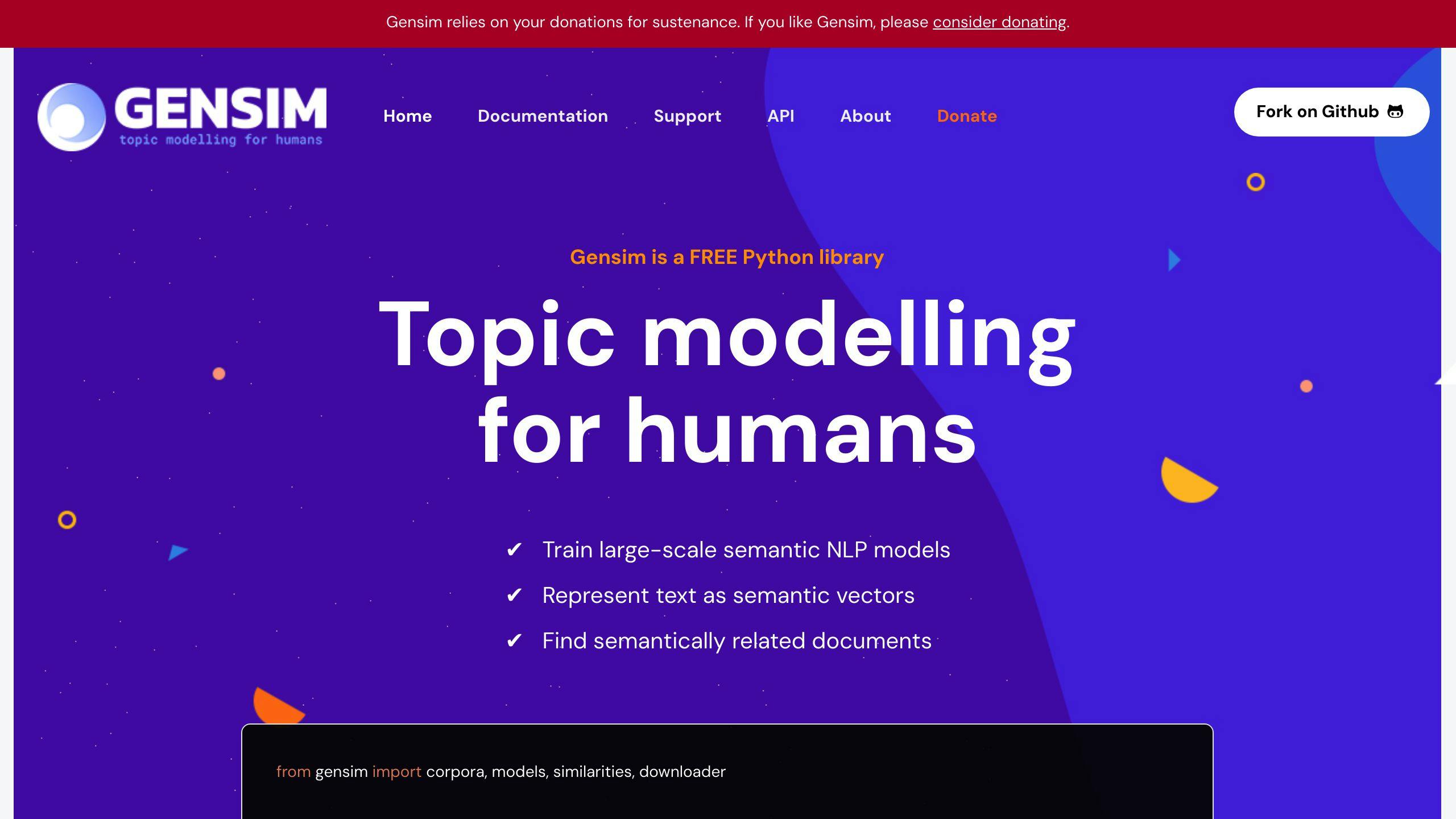
One popular topic modeling technique is Latent Dirichlet Allocation (LDA), which is a generative model that assumes each document is a mixture of topics. Gensim is a popular Python library that provides an implementation of LDA.
Here's an example of how to use Gensim's LDA to extract topics from customer feedback data:
from gensim import corpora, models
# Create a Gensim dictionary from the feedback data
dictionary = corpora.Dictionary(feedback_data)
# Convert the feedback data into a bag-of-words format
corpus = [dictionary.doc2bow(doc) for doc in feedback_data]
# Create an LDA model with 4 topics
lda_model = models.LdaModel(corpus, num_topics=4, id2word=dictionary)
# Print the topics and their corresponding words
for topic in lda_model.print_topics(num_words=4):
print(topic)
Interpreting the Results
The output of the LDA model will be a list of topics, each represented as a weighted list of words. For example:
| Topic | Words |
|---|---|
| 0 | product, service, quality, price |
| 1 | customer, support, issue, resolution |
| 2 | feature, request, update, bug |
| 3 | pricing, plan, discount, promotion |
In this example, the LDA model has identified four topics:
- Topic 0: Product quality and pricing
- Topic 1: Customer support and issue resolution
- Topic 2: Feature requests and updates
- Topic 3: Pricing plans and promotions
By analyzing the topics and their corresponding words, you can gain insights into the common themes and concerns of your customers. This can help you identify areas for improvement and prioritize your product development and customer support efforts.
In the next section, we'll explore how to categorize feedback using machine learning algorithms.
sbb-itb-ceaa4ed
4. Categorizing Feedback
Categorizing feedback is a crucial step in analyzing customer feedback data. By categorizing feedback, you can group similar feedback together, identify patterns and trends, and gain insights into customer needs and preferences.
Training a Classification Model
To categorize feedback, you can train a classification model using machine learning algorithms. One popular algorithm for text classification is the Naive Bayes algorithm. In Python, you can use the scikit-learn library to implement Naive Bayes classification.
Here's an example of how to train a Naive Bayes classification model using scikit-learn:
from sklearn.naive_bayes import MultinomialNB
from sklearn.feature_extraction.text import CountVectorizer
# Create a CountVectorizer object to convert text data into a matrix of token counts
vectorizer = CountVectorizer()
# Fit the vectorizer to the feedback data and transform it into a matrix of token counts
X = vectorizer.fit_transform(feedback_data)
# Create a MultinomialNB object and fit it to the token count matrix
clf = MultinomialNB()
clf.fit(X, labels)
# Use the trained model to predict the categories of new feedback data
predicted_categories = clf.predict(vectorizer.transform(new_feedback_data))
Feature Selection and Model Evaluation
When training a classification model, it's essential to select the most relevant features that can help the model distinguish between different categories. In text classification, features can be words, phrases, or even sentiment scores.
To evaluate the performance of the classification model, you can use metrics such as accuracy, precision, recall, and F1-score. Cross-validation is a technique that can help you evaluate the model's performance by training and testing it on multiple subsets of the data.
Model Evaluation Metrics
| Metric | Description |
|---|---|
| Accuracy | The proportion of correctly classified instances |
| Precision | The proportion of true positives among all positive predictions |
| Recall | The proportion of true positives among all actual positive instances |
| F1-score | The harmonic mean of precision and recall |
By categorizing feedback using machine learning algorithms, you can gain insights into customer needs and preferences, identify areas for improvement, and prioritize your product development and customer support efforts.
In the next section, we'll explore how to visualize insights from customer feedback data using Python.
5. Visualizing Insights
Visualizing insights from customer feedback data helps you understand customer needs and preferences. By presenting data in a clear and concise manner, you can identify patterns, trends, and correlations that may not be readily apparent from raw analysis.
Using Matplotlib and Seaborn for Visualization
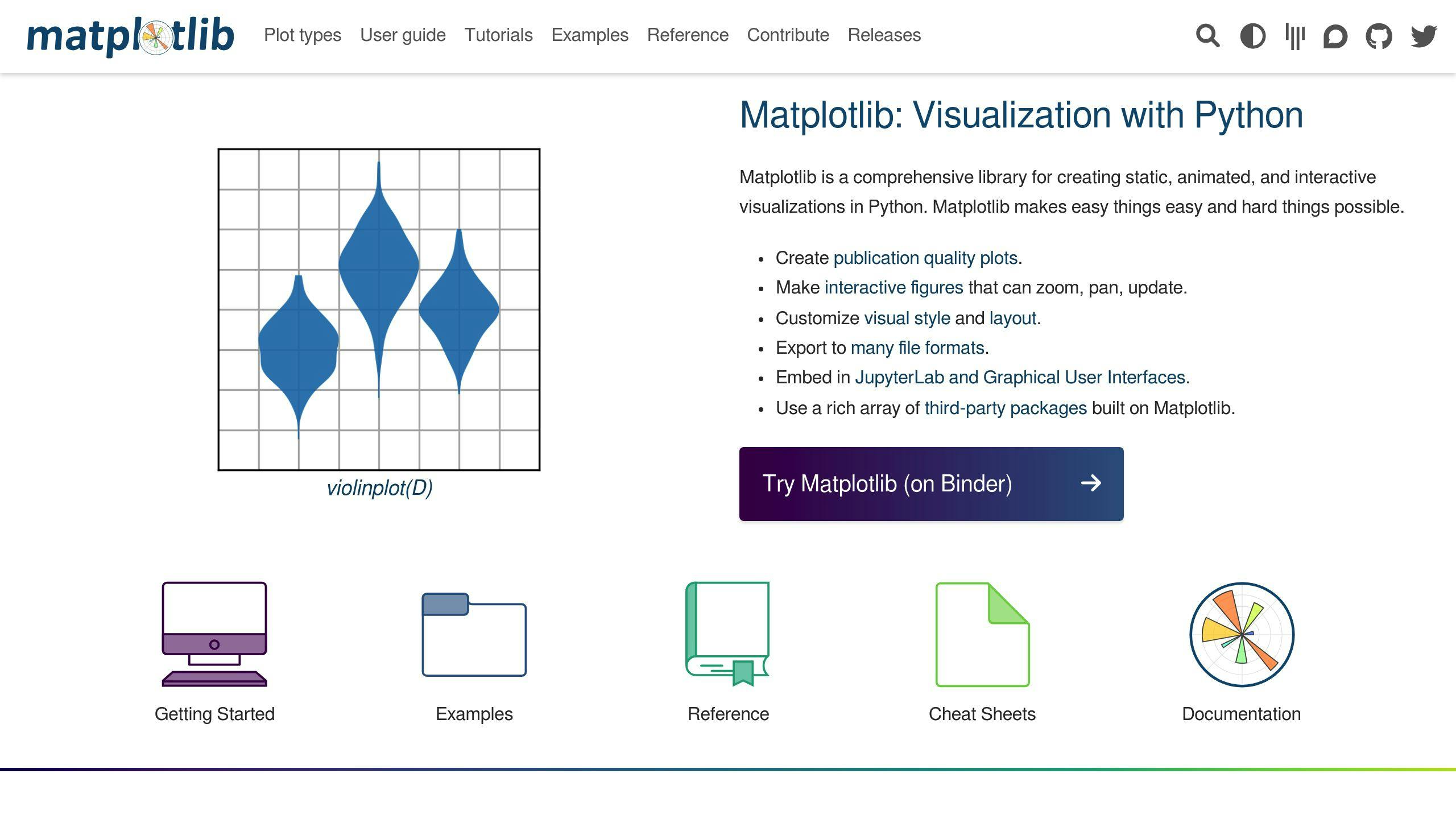
In Python, you can use popular data visualization libraries like Matplotlib and Seaborn to create informative and engaging visualizations. For example, you can use Matplotlib to create bar charts, line graphs, and scatter plots to display sentiment and topic findings.
Here's an example of how to create a bar chart using Matplotlib to display the top 5 topics in customer feedback:
import matplotlib.pyplot as plt
# Create a bar chart of the top 5 topics
plt.bar(range(5), topic_counts[:5])
plt.xlabel('Topic')
plt.ylabel('Count')
plt.title('Top 5 Topics in Customer Feedback')
plt.show()
Creating Word Clouds with WordCloud
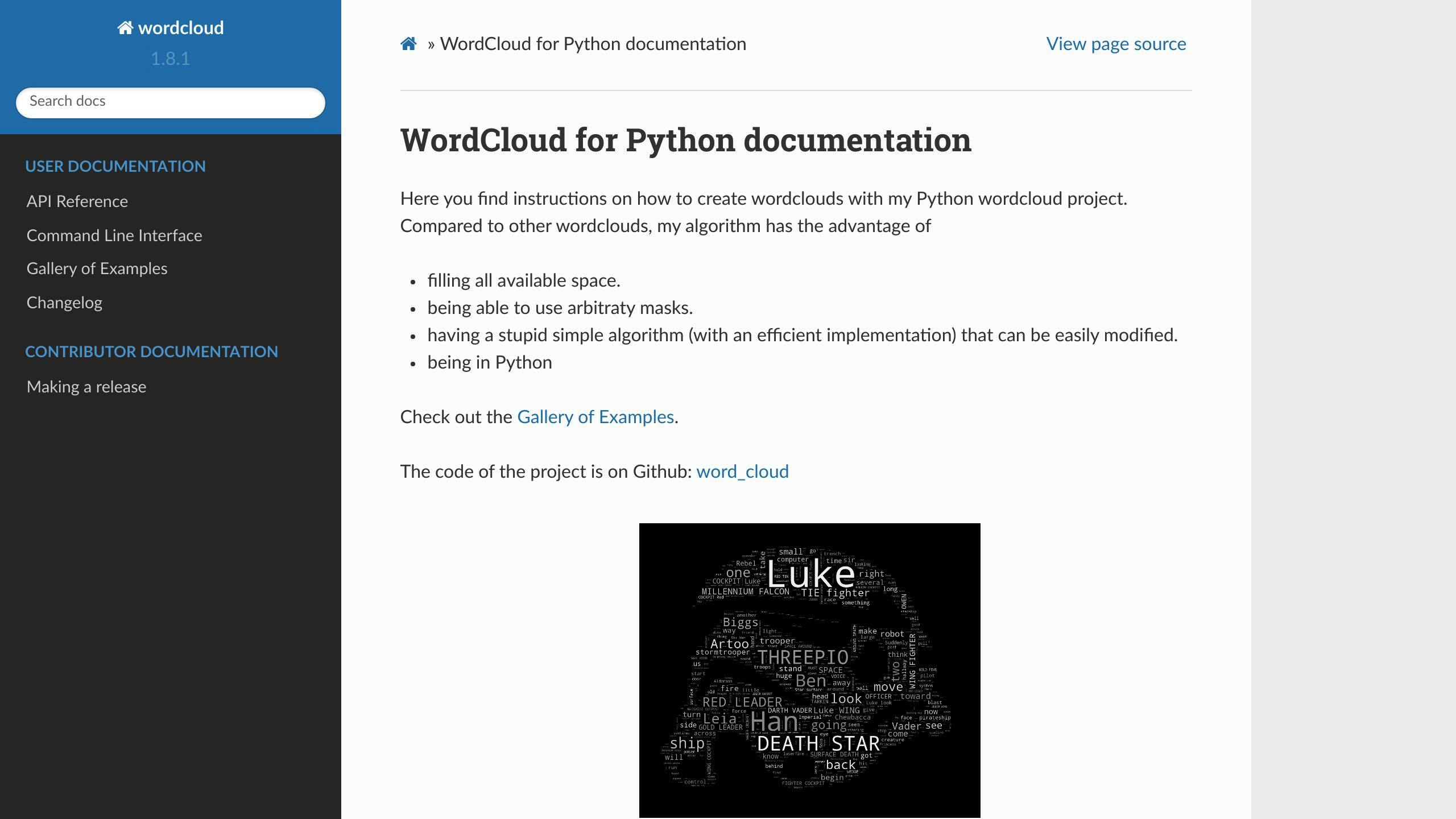
Word clouds are a great way to visualize the most frequently used words or phrases in customer feedback. You can use the WordCloud library in Python to create word clouds that provide a quick and intuitive overview of customer sentiment.
Here's an example of how to create a word cloud using WordCloud:
from wordcloud import WordCloud
# Create a word cloud of customer feedback text
wordcloud = WordCloud().generate(' '.join(feedback_text))
plt.imshow(wordcloud, interpolation='bilinear')
plt.axis("off")
plt.show()
Benefits of Visualization
| Benefit | Description |
|---|---|
| Easy to understand | Visualizations make complex data easy to comprehend |
| Identify patterns | Visualizations help identify patterns and trends in customer feedback |
| Quick insights | Visualizations provide a quick and intuitive overview of customer sentiment |
By visualizing insights from customer feedback data, you can gain a deeper understanding of customer needs and preferences, identify areas for improvement, and prioritize your product development and customer support efforts.
In the next section, we'll explore how to integrate the customer feedback analysis system with other tools and platforms.
6. Integrating the System
Now that you have a functioning customer feedback analysis system, it's essential to integrate it with your existing business systems and workflows. This will enable you to leverage the insights generated by the system to inform business decisions, improve customer satisfaction, and drive growth.
API Usage
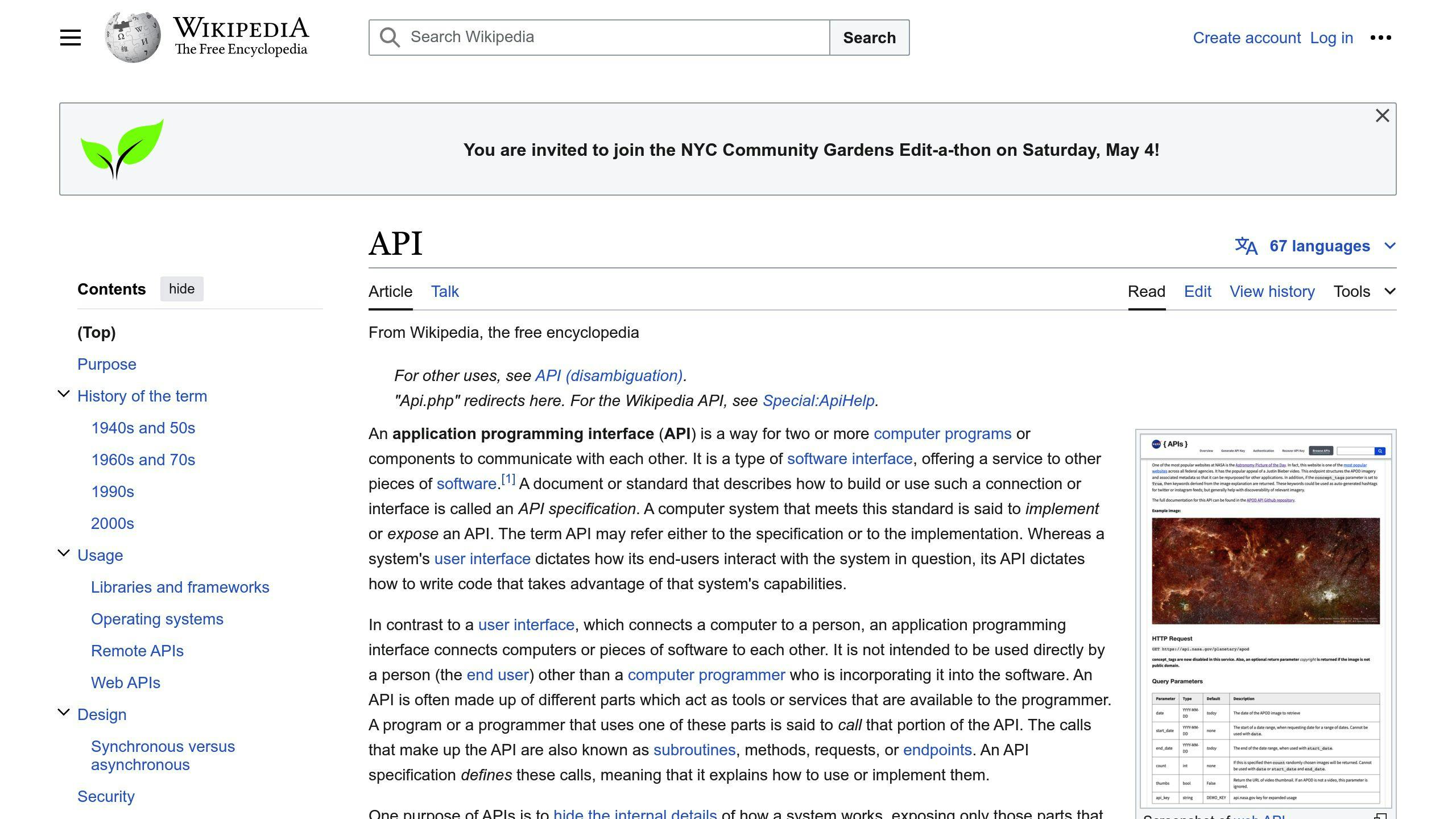
One way to integrate the system is by using APIs (Application Programming Interfaces). APIs allow different systems to communicate with each other, enabling the exchange of data and functionality.
Here are some benefits of using APIs:
| Benefit | Description |
|---|---|
| Data exchange | APIs enable the exchange of data between systems |
| Functionality sharing | APIs allow systems to share functionality |
| System integration | APIs facilitate the integration of different systems |
For example, you can use APIs to send customer feedback data to your CRM system, where it can be used to update customer profiles, trigger automated workflows, or notify customer support teams.
Database Storage
Another crucial aspect of integrating the system is database storage. You'll need to store the customer feedback data and analysis results in a database that can be accessed by other systems and applications.
When selecting a database storage solution, consider the following factors:
| Factor | Description |
|---|---|
| Scalability | The database should be able to handle large volumes of data |
| Security | The database should ensure the security and integrity of the data |
| Data retrieval speed | The database should provide fast data retrieval speeds |
Deployment Considerations
Finally, when deploying the customer feedback analysis system, consider the scalability and reliability requirements of your business. You'll need to ensure that the system can handle large volumes of customer feedback data, process it quickly, and provide accurate insights in real-time.
Here are some deployment options to consider:
| Option | Description |
|---|---|
| Cloud-based deployment | Cloud-based deployment options offer high scalability, reliability, and cost-effectiveness |
| Containerization | Containerization options, such as Docker, offer high scalability and reliability |
| Serverless computing | Serverless computing options, such as AWS Lambda, offer high scalability and cost-effectiveness |
By integrating the customer feedback analysis system with your existing business systems and workflows, you can unlock the full potential of customer feedback data and drive business growth.
Conclusion
Implementing a customer feedback analysis system in Python can greatly benefit businesses. By using Python and its libraries, you can gain valuable insights from customer feedback data and make informed decisions.
In this article, we covered the key steps to build a customer feedback analysis system in Python. We discussed gathering and preparing data, analyzing sentiment, finding common topics, categorizing feedback, and visualizing insights. We also emphasized the importance of integrating the system with existing business systems and workflows.
By following these steps, you can create a robust customer feedback analysis system that provides actionable insights and drives growth. Remember to focus on the customer, make data-driven decisions, and continuously improve your system.
With Python, you can unlock the full potential of customer feedback data and take your business to the next level. Get started today and discover the power of customer feedback analysis in Python!
FAQs
How do you analyze customer feedback?
Analyzing customer feedback is a crucial step in understanding your customers' needs and satisfaction. Here's a simple 5-step process to analyze customer feedback effectively:
- Collect all customer feedback: Gather feedback from various sources, such as social media, review websites, and customer support tickets.
- Identify the root cause: Read each feedback and identify the reason behind the customer's frustration or concern.
- Look for patterns: Analyze the feedback to identify common issues or complaints.
- Quantify the biggest issue: Determine the most common issue and quantify its impact.
- Prioritize and fix: Based on the analysis, prioritize the most critical issue and take necessary actions to resolve it.
By following these steps, you can gain valuable insights from customer feedback and make informed decisions to improve your business.
Why Analyze Customer Feedback?
| Reason | Description |
|---|---|
| Improve customer satisfaction | Analyzing feedback helps you understand customer needs and preferences. |
| Identify areas for improvement | Feedback analysis helps you identify areas where your business can improve. |
| Make informed decisions | Analyzing feedback provides valuable insights to make informed business decisions. |
Remember, analyzing customer feedback is an ongoing process that helps you understand your customers better and improve your business over time.

